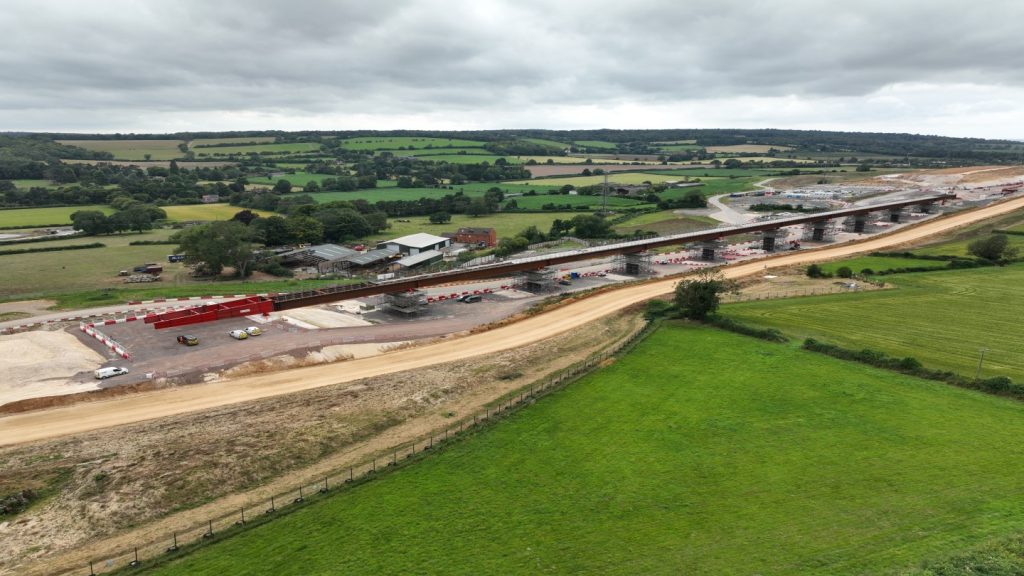The Wendover Dean Viaduct, a structure in the High Speed 2 (HS2) rail project in the UK, has reached a construction milestone with the sliding of its 3,700-tonne (t) deck into position.
The construction team slid the deck nearly half a kilometre uphill into its designated position.
The Wendover Dean Viaduct, stretching 450m, was assembled in a three-stage process.
Beginning in January 2024, the initial 590t section was pushed from the north abutment, with the deck's weight increasing to 3,700t by the time it reached the south abutment.
To reduce friction during the slide, engineers employed Teflon-coated pads against the temporary steel bearings atop the concrete piers.
The deck was pushed uphill to ensure precise control, with the endpoint approximately 1.8m higher than the starting point.
With the steelwork now correctly aligned, the next phase involves lowering the deck onto permanent bearings, an operation expected to span two months.
The deck will be lowered in 20cm increments until it settles into its final position across the entire 450m length.
Following this, the focus will shift to laying the concrete that will form the base of the railway tracks.
This will be achieved using a travelling formwork system, moving from north to south, and is anticipated to take approximately one year.
After this stage, the installation of parapets will commence along the viaduct's edges.
The Wendover Dean Viaduct is said to be the first major railway bridge in the UK to use a ‘double composite’ structure.
This construction method is also being applied to other viaducts at Small Dean, Westbury, Lower Thorpe, and Turweston, which are currently in the early stages of construction.
Main works contractor EKFB, comprising Eiffage, Kier, Ferrovial Construction, and BAM Nuttall, is overseeing the construction of all five viaducts, with Eiffage Metal leading the beam manufacturing and installation.
Last month, River Tame West Viaducts, part of the HS2 project, achieved a milestone with the UK's first use of a cantilever technique.









